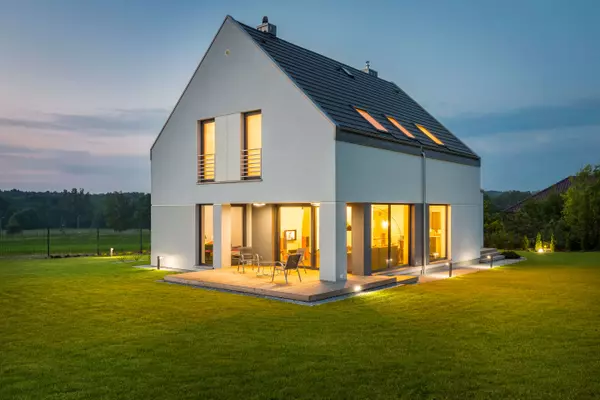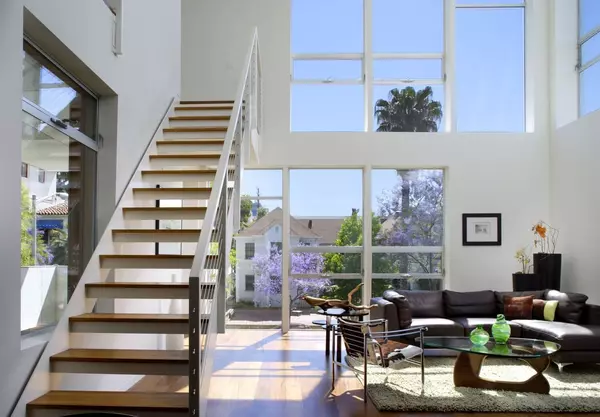Montana Just Cut Property Taxes for 80% of Homeowners—Here’s What Other States Can Learn To Follow Suit
While at least a dozen other states grapple with property tax reform and fallout, homeowners in the Big Sky State are starting to see real relief. Nearly 80% of Montana homeowners will see a tax cut in 2025, with about 10% seeing their bills hold steady, according to newly released data from the Montana Department of Revenue.
The cuts come after a prolonged, sometimes bitter battle in Helena, where lawmakers spent the better part of the legislative session wading through more than a dozen proposals before finally landing on a two-pronged approach with bills SB 542 and HB 231.
While HB 231, the controversial second-home tax, will not be fully implemented until 2026, the interim graduated rate system created under SB 542 is already in effect. This interim structure lowers taxable values for most owner-occupied homes, townhomes, condominiums, and manufactured or mobile homes and freezes values for the time being. The full multitier homestead system—which will apply lower taxable-value rates to qualifying primary residences and long-term rentals—arrives in 2026.
For now, the average savings for a majority of Montana homeowners will total more than $500, on top of a one-time $400 rebate. Those are significant savings for the average Montana homeowner, who previously could expect a roughly $2,300 tax bill for a median-priced home of $378,000.
It’s these measurable savings—and the bipartisan coalition that crafted the reforms—that other states have the most to learn from.
Who wins and who loses under Montana’s new property tax system
The early data makes one thing clear: Primary-home owners are the biggest winners. State records show that 9 in 10 avoided any increase, and 235,000 homeowners secured a rebate. But not everyone comes out ahead, and those gaps are where the sharpest criticism is forming.
The biggest winners
Primary-home owners near the state’s median value are the clearest beneficiaries of the new law, and that was the explicit goal of the reform: to make it easier for Montanans to remain in their homes as valuations and bills surged.
“For years, Montanans have said property taxes are too high, and they’re right,” Gov. Greg Gianforte, a champion of the reforms, said in a press release. “Our focus has been securing meaningful, long-term property tax relief for Montanans in the place they call home, and we’ve delivered. The data make it clear that these reforms are a win for Montana homeowners.”
Seniors, who were among the hardest hit by recent assessment spikes while living on fixed incomes, also saw meaningful relief under the new system. They, too, were a core focus of the legislation.
“Many Montanans nearing retirement or already on fixed income are feeling the pinch from rising property taxes. We need to act quickly to deliver meaningful relief,” Gianforte told a senior roundtable in February.
Who comes out behind
Critics argue that the changes don’t go far enough, though, warning that the package reshuffles the tax burden rather than fundamentally reforming it.
The clearest examples are second-home owners and short-term rental operators. Under the interim 2025 rates, they receive less relief than primary-home owners. And in 2026—when the full homestead system and the 1.9% second-home rate take effect—they are projected to see meaningfully higher bills.
That design is intentional, though. The law explicitly prioritizes year-round residents and long-term rentals, but does so at the expense of out-of-state owners and second-home buyers, who are increasingly viewed as two of the primary causes of Montana’s housing affordability problems.
It's not without good reason. Out-of-state buyers flocked to the state in the COVID-19 pandemic era, driving up valuations with all-cash purchases and scooping up highly limited inventory. In 2021, second-home purchases accounted for up to 20% of all home sales statewide, according to the Realtor.com® analysis of Optimal Blue data. And today, Californians alone collectively own more than $9.5 billion in Montana residential property—more than 5% of the state’s taxable real estate market.
While they face no immediate surcharge in 2025, these homeowners won’t qualify for the lower 2026 homestead tiers unless their property is actually occupied as a primary residence or leased long-term.
But it’s not just out-of-state owners who are going to have to chip in a little extra. Owners of high-value homes in fast-appreciating markets—including parts of Bozeman, Whitefish, and the Flathead—are also expected to see smaller reductions than modestly priced homes. Modeling from the Montana Free Press shows that the new tiers reduce taxable value more aggressively for median-value properties, while luxury or near-luxury homes benefit less from the rate compression.
Together, these uneven outcomes fuel the sharpest critiques of the reform.
“Importantly, both [bills] promise to reduce property tax liability for some by shifting the burden to others, making the reforms inefficient, nonneutral, and uncompetitive,” Joseph Johns, a tax policy analyst at the Tax Foundation, writes. “And every Montanan would see the state liable to backfill local revenue losses for up to four years, underscoring the need to balance reform with sound policy.”
Others warn that the structural changes could produce unintended market consequences.
“What ends up happening here is, as property values surge, it could be a real windfall for local governments,” Manish Bhatt, a senior policy analyst at the Tax Foundation, explained to Realtor.com in May. “But shifting the burden from certain classes of property to others could have a real distortionary effect in the market.”
Why this is already a national case study
Despite its critics, Montana has been able to accomplish something few other states have: a complete bipartisan overhaul of its tax system. And it didn’t rely on the standard playbook most states turn to when homeowners demand relief.
Instead of increasing the homestead exemption like Texas did this year, relying solely on temporary rebates like Florida Gov. Ron DeSantis has repeatedly proposed, or eliminating an entire taxing authority like Pennsylvania is weighing, lawmakers rewrote the core tax rate structure itself.
The political process behind the reform is a big part of the appeal. Montana built its new system on the recommendations of a bipartisan Property Tax Task Force—a small but notable contrast to states where disputes have hardened along partisan lines.
The focus on primary residences, paired with clear residency requirements, has also stood out to lawmakers in tourism-heavy states that are trying to keep relief from flowing disproportionately to out-of-state investors or short-term rental owners.
Perhaps the most important lesson, though, is the sequencing—which offers lawmakers in other states a master class in how to roll out radical reform while ensuring early and enthusiastic buy-in from residents.
Montana gave homeowners money first, through rebates that also qualified them for the 2026 homestead tax rate, and used that momentum to usher in a structural change. In an era where tax policy skepticism runs high, starting with tangible benefits and building trust through transparency before implementing a larger overhaul may be one of the savviest parts of the entire reform.
These elements explain why Montana’s effort is already being treated as a potential blueprint. It doesn’t promise to solve every property tax problem, but it offers something most homeowners in the U.S. haven’t seen in years: a model where rates come down, relief feels real, and the system becomes easier (not harder) to navigate.
Categories
Recent Posts










GET MORE INFORMATION

Stevan Stanisic
Real Estate Advisor | License ID: SL3518131
Real Estate Advisor License ID: SL3518131
